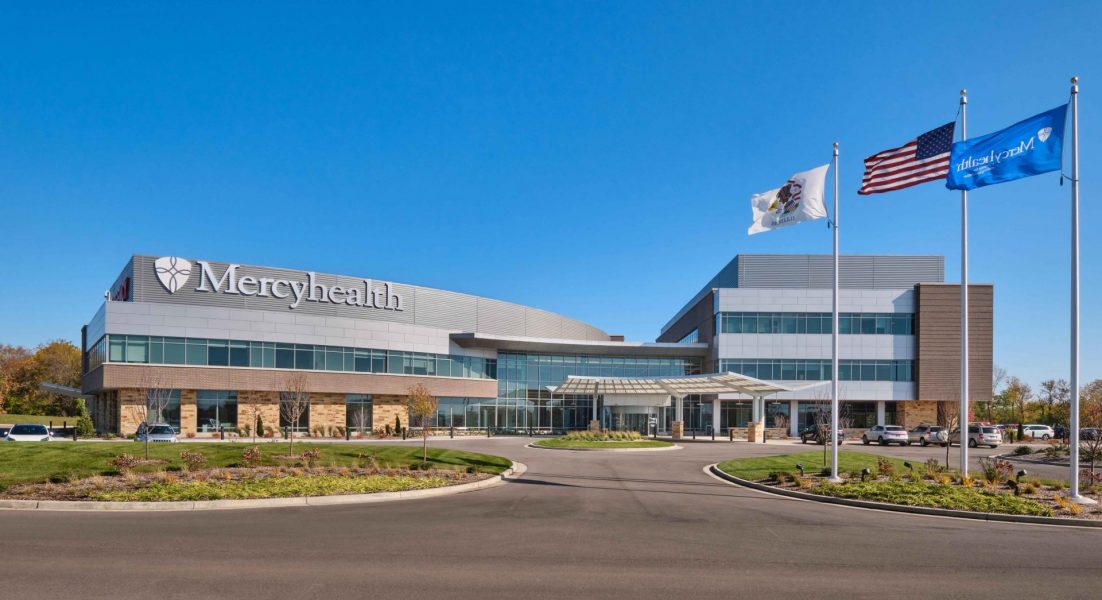Managing marketing at a large hospital system isn’t for the faint of heart—especially when your team is handling over 2,000 projects a year. For Clair Berg, Digital Marketing Manager at Mercyhealth, keeping those projects on track used to be a constant challenge.
“We were averaging about 1,500 projects a year,” Clair said. “But since using Workzone, we’ve exceeded that number every year. I’m pretty sure we were over 2,000 last year.”
Her team now relies on Workzone to manage everything from full-scale NICU campaigns to last-minute digital billboards and even fundraising flyers for bundt cake sales. With so many moving parts, Mercyhealth needed a tool purpose-built for high-volume teams—and they found it.
Before Workzone: Outdated Tools and Lack of Visibility
Before adopting Workzone, the marketing team at Mercyhealth was stuck using an outdated, custom-built project management system created by a small vendor over a decade ago.
“It was archaic,” Clair said bluntly. “Built by a mom-and-pop shop in Missouri, and never upgraded.”
The legacy system lacked visibility, reporting, and any semblance of automation. Most critically, it couldn’t support the complex, recurring workflows typical of project management for hospitals.
Their department also relied on a unique project numbering system to track and archive thousands of campaigns. That level of structure was essential—but hard to maintain with their old tool. “Everything was organized around these codes,” Clair explained. “That structure helped us reference past work quickly, which is vital when you’re managing hundreds of cyclical projects year after year.”
Why Workzone: Flexibility, Visibility, and Unmatched Support
When Mercyhealth began looking for a new project management solution, it wasn’t a planned switch—it was a necessity. Their previous system, a custom-built tool dating back to the early 2000s, had become unmanageable: clunky, outdated, and ultimately unsupported after internal organizational changes. But switching systems is never just about replacing one tool with another. Clair and her team were looking for something that could do far more.
“We weren’t just trying to check boxes,” Clair said. “We needed a system that could fit our process, not the other way around.”
Budget was a major factor, but not the only one. They had a deeply embedded way of organizing projects using service line prefixes and unique identifiers—something most off-the-shelf tools couldn’t accommodate without workarounds. “We archive thousands of projects a year, and the numbering system is core to how we store and retrieve files,” she explained. “We needed a system that could support that structure without breaking.”
Workzone not only allowed them to maintain this system—it provided new ways to bring order to complexity. Clair said the flexibility in workflow design was a clear standout.
“Unlike some platforms that force everything into a straight line, Workzone let us build workflows that reflect how our team actually works,” she explained. “We could have tasks go to multiple people at once, and the project wouldn’t move forward until everyone had completed their part. That was a big deal for us.”
This level of configurability also improved resource planning and workload management, particularly for their five project managers who juggle different service lines. Before Workzone, balancing those assignments meant constant trial and error. Now, the team can easily see how work is distributed across the year, forecast project loads, and reassign service lines only when necessary. “What used to happen two or three times a year now only needs to happen once,” Clair said.
Then there’s visibility—not just into project progress, but into team performance. The platform’s reporting features gave leadership new insight into output and engagement.
“Our old system gave us nothing,” Clair said. “With Workzone, we can see how many projects are in flight, who’s responsible, and how things are moving. It’s been incredibly helpful for our leadership team in understanding where time and energy are going—and where they’re not.”
But if there’s one thing that truly sealed the deal, it was support.

“The customer service is unmatched—50 out of 10. Even two or three years in, we can reach out and get help within the hour. That just doesn’t happen with most vendors.”
– Clair Berg, Digital Marketing Manager
She recalled a time when she had a particularly nuanced question. “Alex didn’t have the answer right away, but he made a custom video walking me through the solution. Who does that? That kind of care and responsiveness is why I tell everyone: just try it.”
From workflow customization and deep reporting to responsive, human-centered support, Workzone gave Mercyhealth a platform that feels less like software—and more like a strategic partner.
Smarter Workflows, Faster Turnarounds
The benefits were immediate. Instead of relying on slow manual steps, Mercyhealth’s team now moves projects through Workzone with speed and precision. Favorite features include:
- Automated Workflows with Dependencies: “It used to be that every task came back to the project manager before moving forward,” Clair explained. “Now, once someone marks it as done, it goes right to the next person. That’s been a huge efficiency gain.”
- Tagging for Priority Projects: Mercyhealth reserves Workzone’s tagging feature for high-priority items—like urgent requests from the executive team. “It helps everyone know what needs to come first,” Clair said. “We can turn around executive billboard designs in a matter of hours.”
- Markup Tools: With a hybrid team spread across locations, passing around printed drafts became a logistical nightmare. Now, Workzone’s markup feature allows real-time collaboration and revision. “It’s saved us so much time and money,” Clair noted. “We don’t have to worry about printing, scanning, or guessing what someone meant with handwriting.”
- Detailed Reporting: Leadership now has insight into how much each team member is handling across time periods, allowing for smoother planning and fewer last-minute reshuffles.
Culture Matters: How Workzone Became Part of the Team
One unexpected bonus? The team actually enjoys using the platform. Clair introduced the “Zonies”—an internal awards ceremony celebrating Workzone usage, from “Most Projects Completed” to “Best Use of Emojis.” They even hand out trophies.


“We did it for our one-year anniversary with Workzone,” Clair said. “Now it’s a tradition.”
For Clair, one of the biggest differentiators is the human touch. “The culture of the people working at Workzone shines through,” she said. “You can feel that it’s a small, tight-knit team behind the scenes—but the platform has big power. For example, I can get in touch with their CEO today if I wanted to. You don’t get that anywhere else.”
A Better Way to Do Project Management for Hospitals
Mercyhealth is proof that project management for hospitals doesn’t have to be chaotic. With Workzone, their team has gained the structure, visibility, and responsiveness they need to handle thousands of fast-moving projects with confidence.
As Clair put it, “You’ve got to try it. It changes how you evaluate things. The customer service and the organization of projects—you really can’t beat it.”
Workzone is built for high-volume teams like hospital marketing departments—with robust reporting, real-time collaboration tools, and a support team that’s always a Zoom call away. Ready to bring clarity and control to your hospital’s marketing operations?
Sign up for a demo of Workzone today.




